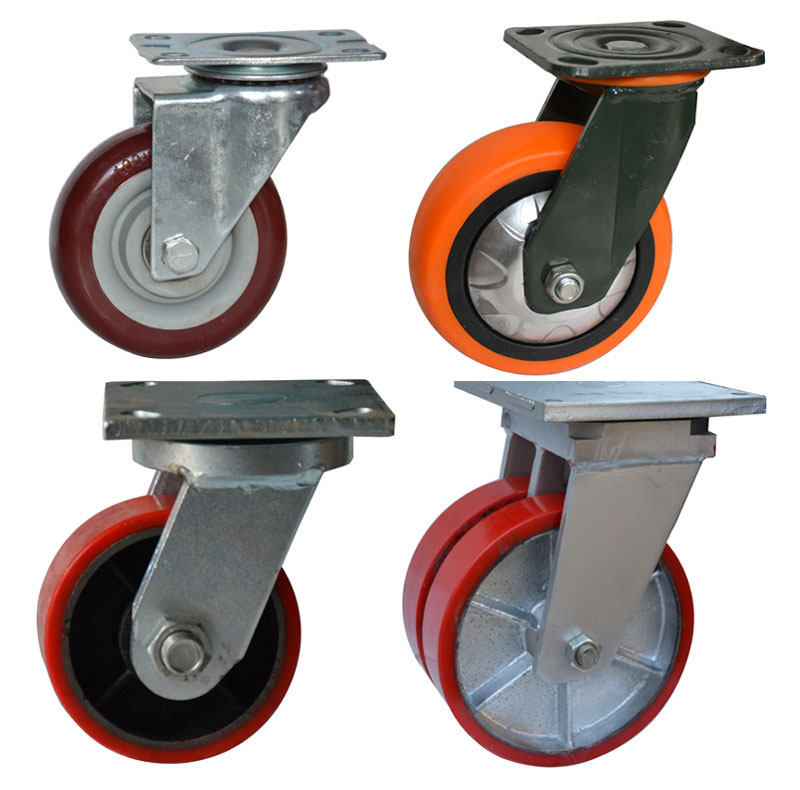4 Types of Casters

The word caster refers to a type of wheel, typically attached to non-motor vehicles, though some are designed for use in motor vehicles and industrial environments. Here are four types of casters.
1. Locking Casters
Locking casters are defined by the inclusion of various locking mechanisms in their designs. You can use this type of caster whenever you need to ensure a vehicle or piece of equipment stays in place, for example, if you need to stop while on an incline. There are casters with simple lever locks and ones with more complicated and secure total locks. You can also use two or more locking casters at once.
2. Swivel Casters
Swivel Casters are more complex versions of traditional casters. Whereas traditional casters are fixed in place and thus do not allow for deviation from moving in straight lines, swivel casters allow you to turn a vehicle in any direction. This is achieved by the addition of a joint that allows the caster to turn in a complete circle. Swivel casters are commonly employed in rolling chairs.
3. Stem Casters
This type of caster is unique among casters due to the way it’s mounted on vehicles. A stem caster consists of the wheel and a cylindrical rod which allows it to be mounted. Most other casters are designed with flat top plates, which are square surfaces that can lie flat against a vehicle and be secured. The rod may be smooth and rounded or threaded but is meant to be inserted into a mounting slot on a vehicle or other object. This means a stem caster can only be used in compatible vehicles, whereas other types of casters can be used with more variety.
4. Industrial Casters
In many industries, there is a need for more robust and durable casters. This is where industrial casters come in. These casters come in rigid and swivel varieties and are designed to be able to handle loads of thousands of pounds. They tend to look similar to other types of casters but are heavier, thicker and larger than others due to the size and weight of the equipment and loads they must support.
Make sure you choose casters that make sense for the type of work you’re involved in and the type of vehicle you need to attach them to. An incompatible caster may lead to difficulty moving a vehicle or object and to potential injuries.
